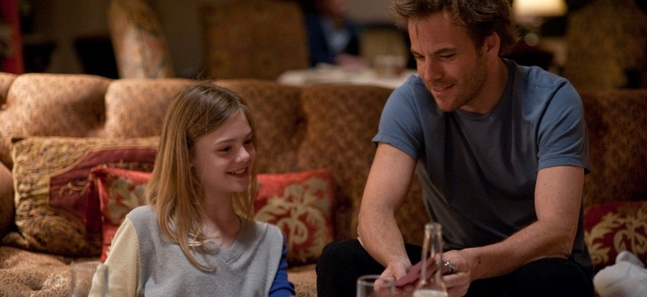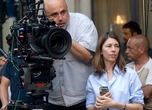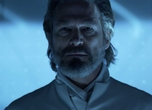Somewhere
There's a sense of treading old ground in Sofia Coppola's new film

Posted: Sat Apr 02 2011
Director: Sofia Coppola
Starring: Stephen Dorff, Elle Fanning, Benicio Del Toro
Time Out rating: 
Playing it more low key and less brash than in Marie Antoinette, Sofia Coppola is back in another rarefied world for her fourth feature and her first on home turf since The Virgin Suicides. This time she swaps Versailles for Sunset Boulevard and the French queen for Johnny Marco (Stephen Dorff), a movie star living in limbo in a Hollywood hotel. Not any lodging house either, but the Chateau Marmont, a haven for upscale decadence where one is likely, as Johnny does, to bump into the likes of Benicio del Toro in the lift (a nod to Scarlett Johansson’s joke that she had a steamy encounter with him in one of the hotel’s elevators).
Johnny does little apart from feel like a spare part at his own parties, lie in bed watching strippers slide down poles as he recovers from a broken arm, and occasionally obey orders to attend press conferences. The only constant in his life, beyond room service, is his 11-year-old daughter Cleo (Elle Fanning). Even then, this smiling, smart girl’s visits feel like an awkward duty. It’s only when Cleo’s mother leaves her with him for longer than usual that Johnny hangs out with her, takes her to Italy and enjoys the warmth of a father-daughter relationship, even if they’re not doing much more than playing tennis on Wii Sports and sharing ice cream.
The upscale hotel location, the character in limbo and on the cusp of recovery or reawakening and the tenderness between two unlikely characters are all familiar from Lost in Translation, and there’s a sense of treading old ground. At the same time, for all the familiarity, the difference is that this is a film about Hollywood, the place as well as the ideal, and there’s a hint of the sinister side of celebrity in the anonymous, nasty texts Johnny receives and his paranoia that he’s being followed by paparazzi wherever he goes.
That said, the film’s notes on fame are gentle and wry, never damning or deep, so questions from journalists don’t reach the satirical levels of 8 1/2 or even the reality of Don’t Look Back. Some gags – of which there’s only a sprinkling – are surprisingly broad: Johnny goes to bed with someone and falls asleep between her legs; his masseur alarms him by preferring to work in the nude; crude Italian models swamp him at an awards ceremony.
Coppola is more comfortable with the quieter, more moody and dominant side of her film. She opens as Johnny drives a sports car round and round a track at length. Later, he motors across the country en route to a suggested personal epiphany, to which Coppola is too cool to get too close, meaning that the film fades out weakly. She prefers to look, not touch: standout scenes include Chloe skating around a rink as her father looks on and another in which Johnny has a mould made of his head, leaving us feeling claustrophobic and him strangely free as he sits in silence and encased. Coppola works with Gus Van Sant’s cinematographer Harris Savides and the link with Van Sant shows in a use of natural light, stillness and a search for the essential in quiet scenes.
For all the knowing Hollywood face of Somewhere, it’s the non-celebrity, Chloe, who is the film’s soul. Her age, moving from child to teens, means her interaction with her dad and other adults is oddly ambiguous and Coppola again shows how keen she is to show cosseted young girls and women struggling with their place in the world. The rapport between Dorff and Fanning is fun and tender, especially when she shoots him daggers when he brings a woman to breakfast in Italy, but while it’s Johnny’s life we see the most of, it’s Chloe’s which ends up being the most intriguing.
Somewhere opens in Japan on April 2. Click to read our interview with Sophia Coppola
Tweets
- About Us |
- Work for Time Out |
- Send us info |
- Advertising |
- Mobile edition |
- Terms & Conditions |
- Privacy policy |
- Contact Us
Copyright © 2014 Time Out Tokyo














Add your comment